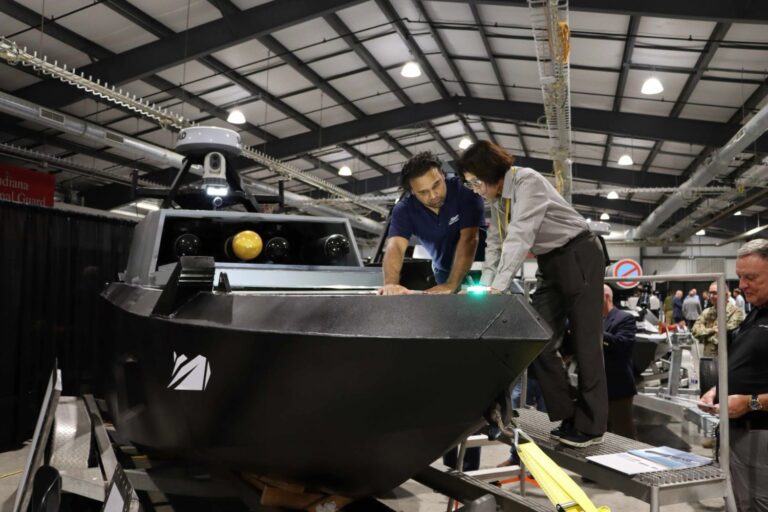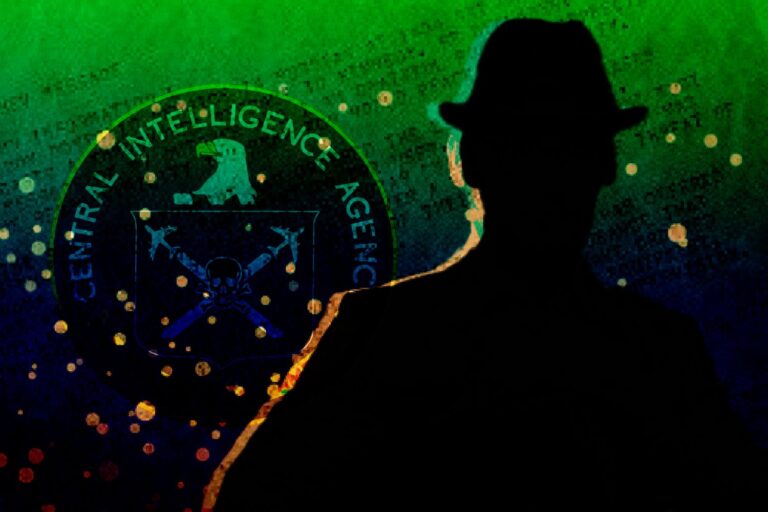The Complexity of Federal Acquisition Regulations (FAR) is Hurting Businesses
There are so many papers to read when you want to become a government contractor. Becoming a qualified federal government contractor requires your business to complete a number of steps and meet specific standards that don’t apply to other types of work. To get there, businesses need to read a lot of papers, the FAR is one of them.
If you’re a contractor, you’ve likely heard of — or been overwhelmed by — the Federal Acquisition Regulation (FAR). It’s one of the biggest challenges newcomers face, and even experienced professionals need to stay updated as the FAR has been constantly revised since its inception.
With 53 parts and over 2,000 pages, it has been criticized for its complexity and lengthy language, making the path to securing government contracts more difficult. Before tackling the issues within the FAR, it’s important to understand its fundamentals.
The Bible of Government Contracts and Its Functions
The Federal Acquisition Regulation (FAR) was enacted in 1984 and applies to U.S. federal contracts and subcontracts. The Federal Acquisition Regulation (FAR) is the primary regulation for use by all executive agencies in their acquisition of supplies and services with appropriated funds.
The FAR also contains standard solicitation provisions and contract clauses and the various agency FAR supplements. The Department of Defense (DoD), GSA, and the National Aeronautics and Space Administration (NASA) jointly issue the FAR.

As the “bible of government contracts,” the FAR serves several purposes.
The FAR functions not only as a set of rules but also as a navigational tool, directing all government acquisition participants towards ethical practices and efficient procurement. The FAR upholds the highest level of public trust, demanding complete impartiality and preventing preferential treatment in government business.
But it goes beyond just fairness. The FAR aims for the timely delivery of the best value products and services, fostering cooperative relationships between the government and its contractors. This cooperative relationship is more than just a good business practice; it aligns with public trust and supports the achievement of policy objectives.
Ensure Ethical Practices of the Procurement Process
The legislation addresses many aspects of federal procurement, including streamlining administrative costs and ensuring companies contracted by the government have ethical business practices.
A provision banning the use of human trafficking and forced labor in supply chains (subpart 22.17) places several requirements on companies providing goods or services to any federal government department.
For example, contractors and subcontractors that source services and/or supplies from abroad as part of U.S. contracts are prohibited from denying an employee access to their identity or immigration documents, using misleading practices to recruit workers, charging recruitment fees, failing to provide written contracts of employment and more.
Penalties for non-compliance can include the termination of a contract, suspension of payments or a retraction of the award altogether, in addition to reputational and operational losses.
Promote Transparency During the Procurement Process
As of December 12, 2008, amendments to the Federal Acquisition Regulation (FAR) require government contractors to self-report violations by themselves or their employees related to criminal acts like fraud, conflicts of interest, bribery, or violations of the False Claims Act (FCA). These offenses must occur in connection with the award, execution, or closeout of a contract or subcontract. False statements are a common offense in procurement fraud cases and are used to address various fraudulent activities.
The FAR mandates that contractors report such violations as soon as they have credible evidence, typically before a full investigation is completed. This disclosure should happen within 30 days to benefit from provisions in the FCA, which reduce the penalties to double rather than triple damages for timely self-reporting.
Contractors must explicitly state that their disclosure complies with FAR Section 52.203-13 and provide preliminary details on the violation, including the nature of the offense and any potential damages. While FAR does not require waiving attorney-client or work product privileges, such waivers could occur if information is shared with third parties.
Contractors must follow these mandatory disclosure rules while maintaining their right to defend against investigations and protecting attorney-client privilege. The 2008 FAR amendments shifted focus from management oversight to law enforcement, raising concerns about its effect on decision-making in civil FCA violations, as the Department of Justice now plays a larger role in managing federal acquisitions. Ultimately, contract success increasingly depends on effective compliance programs.
The Complexity of Federal Acquisition Regulations
Although the FAR serves as a key framework for federal procurement, many view it as overly complex, creating obstacles that hinder business growth. Since 1995, the FAR has expanded by 21%, making its total length comparable to the entire Harry Potter book series.
In many ways, the procurement process is falling short of the vision set out in the FAR, “to deliver on a timely basis the best value product or service to the customer while maintaining the public’s trust and fulfilling public policy objectives.” This is in part because the FAR was created in 1984 and has evolved into a patchwork of amendments and workarounds to maintain its applicability.

The Defense Innovation Board, which advises top Pentagon leaders on commercial sector innovation, called the web of regulations a “massive spaghetti code” in a report on how the acquisition process has become bogged down by layers of rules.
The report stated, “While the first steps to refactoring the defense acquisition system can be taken without necessarily having to change regulations, the reality of the current situation is that Congress and DoD have created a massive “spaghetti code” of laws and regulations that are simply slowing things down. This might be OK for some types of long-development, long-duration hardware, but as we have articulated in the previous three chapters it is definitely not OK for (most types of) software.”
Will Roper, the former Assistant Secretary of the Air Force for Acquisition, Technology and Logistics, noted, “the service is using MacGyver-like techniques to make the system do things it wasn’t originally envisioned to do … I do not think the original drafters of the FAR would have imagined a complete 180. So we must hack the system to be relevant.”
Who Bears the Brunt?
The complexity of the FAR is significant, and its effects on related entities are apparent. One key affected party is the procurement team.
The Burden on Procurement Team – Contracting Officers Can’t Even Follow
According to the report Digitizing Federal Procurement of Bidscale, the administrative tasks that underpin this system create an unwieldy set of requirements that challenge procurement teams’ ability to move quickly.
Due to these administrative burdens, many contract delays jeopardize essential missions impacting the American people. Major General Holt, USAF, former Contracting Officer for the F-22 tactical fighter aircraft, stated in a 2020 interview, “I told them that [the House has] written so many laws that we need to implement that our Contracting Officers in the trenches can’t even follow them all because they actually start to conflict with each other.”
To manage procurement complexities, federal agencies rely on specialized civil servants known as Contracting Officers and Contract Specialists (GS-1102s) to guide contracts through the procurement process. Each year, government agencies award over $680 billion in contracts, establishing relationships with more than 120,000 businesses.
This intricate network of support and accountability is overseen by approximately 40,000 Contracting Officers, along with Program Managers, Contracting Officer Representatives, and other acquisition professionals.
These officers must thoroughly understand the FAR, which governs procurement across the U.S. Government, while also adhering to policies specific to their agencies, outlined in numerous FAR supplements. Procurement teams are tasked with interpreting mission needs and navigating a complex array of administrative requirements simultaneously.
While the procurement system is designed with good intentions and establishes high minimum standards for the quality of U.S. Government contracts, its complexity can hinder procurement efficiency and speed.
The report said, “This system is well intended and sets high minimum standards for the quality of USG contracts, but the complexity can have negative impacts on procurement throughput and speed. Even the most seasoned Contracting Officers, backed by decades of experience and deep familiarity with the system, spend a larger portion of their time navigating administrative and compliance requirements rather than focusing more on strategic responsibilities.”
The report also mentioned another problem that procurement teams encounter – significant obstacles due to legal challenges and bid protests, which often prolong the contract award process and delay the fulfillment of mission requirements.
In Fiscal Year 2021, the GAO recorded 1,897 cases, including 1,816 protests, of which only 15% were upheld. This indicates that over 85% of contested contracts faced unnecessary legal complications. Such protests frequently arise from regulatory complexities, ambiguous requirements, and errors from manual processes.
Sustained protests are typically the result of flawed evaluations or unequal treatment of bidders. To navigate these challenges and remain focused on mission needs, procurement teams must continuously adapt to the evolving FAR. The U.S. Government needs to innovate to mitigate these risks effectively.
Impact on Innovative Businesses

Attracting innovative companies to partner with the U.S. Government is essential for advancing technology. The DoD and other agencies have historically driven significant innovations like EpiPens, GPS, and microwave ovens, with the military once accounting for a third of global R&D efforts. To maintain this momentum, the U.S. Government must continue to support innovation.
However, the complexity of the FAR seems to hinder this innovation.
General John Hyten, USAF, former Vice Chairman of the Joint Chiefs of Staff, discussed challenges in cybersecurity contracts during a 2020 interview.
He emphasized, “We write requirements for a product that say, ‘I want that built and delivered in 10 years. I want it to be cybersecure, and deliver everything perfect in 10 years.’ If you do that based on a threat at the beginning of the process, you get a capability to defeat the threat that was 10 years ago. And in cyber, you’re already out of date tomorrow.”
As stated in the report of Bidscale, the negative effects of complexity in the acquisition process are widely recognized. During a House subcommittee hearing on September 20, 2022, Representative Jack Bergman (R-MI) raised concerns about the Department of Veterans Affairs’ (VA) acquisition workforce needs, asking what improvements were necessary for greater effectiveness.
Mr. Michael D. Parrish, the Principal Executive Director for the Office of Acquisition, Logistics, and Construction (OALC) at the VA, provided insights on these challenges.
Mr. Parrish insisted that the acquisition workforce’s main challenge is navigating an outdated bureaucratic system in a digital world. While they effectively meet their mission requirements, they face heavy workloads. He pointed out the need for better tools and technologies to help them work more efficiently and improve productivity.
He said, “Our biggest challenge is operating an analog bureaucracy in a digital world….But for the technology, our acquisition workforce are doing a great job to meet the mission. But one of the identified challenges is workload. That’s where we need to get them the tools and the technologies to be able to help them more efficiently and more streamlined do their efforts…What they all need help with is some efficient tools to help them do their job better.”
When Innovation Can’t Be Capitalized Fast Enough – The “Valley of Death”
The report also addressed a significant issue where many innovative, non-traditional companies hesitate to engage with the U.S. Government due to difficulties in navigating the procurement system and the long lead times associated with government contracts.
This creates a preference for government agencies to work primarily with large, established contractors, discouraging capable small businesses that specialize in specific areas from participating due to high entry barriers. These businesses often lack the resources to untangle the complexities of federal procurement and, even if they attempt to, encounter additional challenges along the way.
“Startups looking to do business with the DoD often experience the so-called Valley of Death. As a result of generous pilot funding, a startup may have developed and demonstrated an innovative and effective product that warfighters need, and Commanding Officers want to procure. Post-pilot, however, there is a two-to-three year delay until meaningful funding can be obtained through the Program Objective Memorandum (POM) process,” the report pointed out.
It continued, “Many promising technologies fail to move beyond the R&D stage. For startups, this delay can be unsurvivable. Talented, hard-working startups close up shop or take their necessary, innovative solutions to private industry or even other countries’ militaries.”
Representative Ken Calvert (R-CA), ranking member of the House Appropriations Subcommittee on Defense, said, “The U.S. Government has been a lousy partner, quite frankly. We get companies and we waste their time … and then we’re wondering why we’re not getting the technologies we want.”These start-ups need to be better enabled, through policy, so they can persevere to bring cutting-edge technology to the USG.
How Do We Tackle This Problem?

While there are efforts pouring in to help with the FAR, the outcomes are not yet effective.
More Efficient Tools
Organizations like the Defense Innovation Unit (DIU), Air Force Innovation Unit (AFWERX), NavalX, Army Futures Command, and the DHS Procurement Innovation Lab (PIL) are working on ways to simplify the federal procurement process and speed up the delivery of services to military personnel.
The Department of Defense (DoD) has started using Commercial Solution Openings (CSO) and Other Transaction Authority (OTA) more frequently to help achieve this speed. For instance, the use of OTAs skyrocketed by 712% from FY 2015 to FY 2019 and then doubled again from FY 2019 to FY 2020. According to DIU’s FY 2021 Annual Report, the DoD completed 93 CSO actions totaling $1.9 billion, a significant increase from just 45 actions costing $37.7 million in FY 2020.
However, focusing too much on speed can lead to problems with long-term costs and performance, as it may encourage short-term fixes instead of ongoing improvements. While these efforts have made some progress in efficiency, a broader and lasting improvement in federal procurement is still needed.
The Ongoing Efforts to Simplify the Federal Acquisition Regulation
There are ongoing efforts by the U.S. government to simplify the Federal Acquisition Regulation (FAR). Recent legislative initiatives, particularly the National Defense Authorization Act (NDAA) for fiscal year 2024, include provisions aimed at enhancing the procurement process. These changes are being driven by a recognition of the need to balance speed and efficiency with transparency and oversight in government contracting.
The Department of Defense (DoD) has also introduced the Adaptive Acquisition Framework, which includes various pathways designed to streamline the acquisition process. This framework allows agencies to choose the most suitable approach based on specific project needs, which aims to reduce bureaucratic hurdles and accelerate the delivery of new technologies and capabilities.
However, there are still challenges, including the need to address a backlog of rules and regulations that complicate procurement processes.








